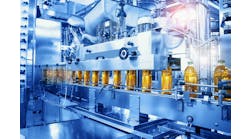One of the realities of automation systems is their use in hazardous or dangerous areas and operations that have become the go-to method for efficiently operating and safely managing risky or potentially hazardous functions. The ability to reduce exposure time for personnel and technicians in hazardous areas greatly reduces potential safety matters and mitigates loss.
A number of methods and advantages are available to remotely monitor hazardous operations.
Human-machine interface (HMI) has become a mainstay of manufacturing automation systems. Among the many uses for HMIs is the option to utilize them in operations where hazardous and dangerous situations exist that could be harmful to operators, technicians or engineers.
Understanding and using key strategies is crucial in hazardous and dangerous areas to ensure safe and effective operation of industrial processes. When we consider the number of opportunities to employ HMIs in riskier operations, certain advantages become apparent when the need to mitigate risk exists. Here are some common strategies that can be utilized.
1. Management of alarms: Effective alarm management is critical in hazardous areas to ensure that operators can quickly identify and respond to any abnormal conditions. This can include prioritizing alarms based on their severity, reducing nuisance alarms and providing clear and concise information to operators. Utilizing an HMI to properly prioritize and categorize alarms allows technicians to have a clear understanding when abnormal functions take place. Alarms are common in automation systems and help us monitor when conditions do not meet standards. The ability of an HMI to monitor these alarms and react to these alarms is key to ensuring smooth and safe daily operations.
2. Barrier management: Barrier management involves implementing physical barriers and safety systems to prevent accidents and minimize the impact of any potential hazards. This can include implementing safety interlocks, pressure relief valves and emergency shutdown systems. Once a hazardous area has been identified, it’s crucial to provide barriers to entry, but it’s not always possible to exclude all entry at all times. Therefore, barrier monitors such as electric eyes or laser beams can be utilized and monitored through the HMI to recognize when unauthorized entry has been made into an area identified as hazardous or dangerous. Earlier this week, we were visiting a shop where a CNC machine tool had a hazardous area identified that had to be protected with a light curtain to prevent the machine from running if this area was entered. However, the same area was the loading area for the machine and could not be locked out with a physical cage. This is where the system keeps the operators and others safe, should they inadvertently enter the hazardous zone by stopping the machine, spindle and movement of both axes immediately.
3. Control room design: The design of the control room should be optimized for operator comfort and safety, with clear visibility of process equipment and ergonomic workstations. The layout should also allow for easy communication between operators and maintenance personnel. Remote monitoring of hazardous and dangerous areas means control rooms can be designed to monitor a hazardous automatic process from a safe location or with built-in safety protocols that allow technicians to safely oversee operations. These control rooms can be temperature-controlled, impact-resistant or simply far enough away to operate in a protected manner. With proper HMIs or supervisory control and data acquisition (SCADA) systems installed, a whole process can be overseen and operated from one central location. Additionally, control rooms give us space to install redundant systems to further reduce failures in critical operations should an event occur that would be out of the normal operating procedures.
4. Training and procedures: Operators working in hazardous areas need to be well-trained in the procedures for handling abnormal situations and responding to emergencies. This can include conducting regular drills and providing refresher training to ensure that operators remain prepared for any situation. Utilizing an HMI to provide correct feedback in handling abnormal situations or emergencies can further reduce confusion and mitigate the risk of improper procedures. The HMI can give specific directions to technicians for correcting the abnormal situation, as well as shutting systems down as needed in the event of an emergency until properly trained personnel can evaluate the situation and restart the system safely.
5. Automation: Automated systems can reduce the risk of human error and provide faster response times in hazardous areas. This can include implementing advanced control algorithms and using sensors to detect abnormal conditions and trigger appropriate responses. Remotely monitored cameras can detect abnormal conditions and implement corrections within specified parameters on the HMI. The ability to monitor and correct a functioning system reduces downtime, increases throughput, improves quality and maintains safe daily operation of systems that otherwise would be very costly to manage manually. Reducing touch time from personnel in a hazardous operation is an intelligent strategy for creating safe daily operations for technicians and increasing the return on investment (ROI) of the system.
Overall, effective HMI strategies in hazardous and dangerous areas involve a combination of technology, process design and operator training to ensure safe and reliable operation of industrial processes.
By implementing these strategies, it’s possible to enhance the safety of human-machine interaction in hazardous and dangerous areas, while also improving efficiency and productivity.





